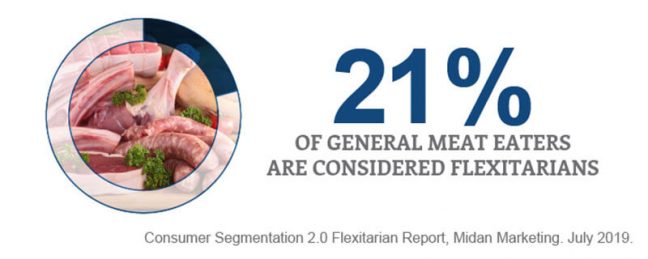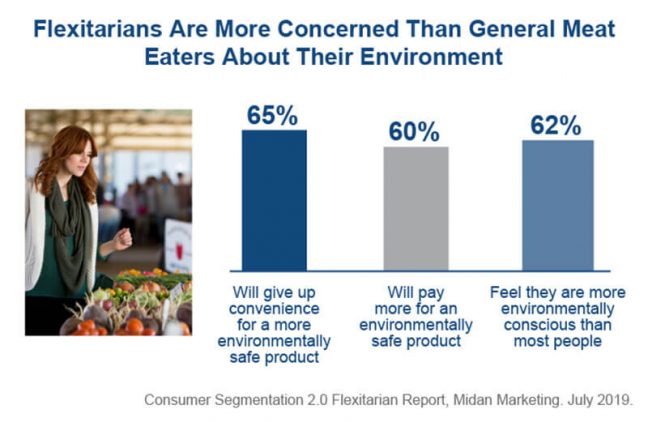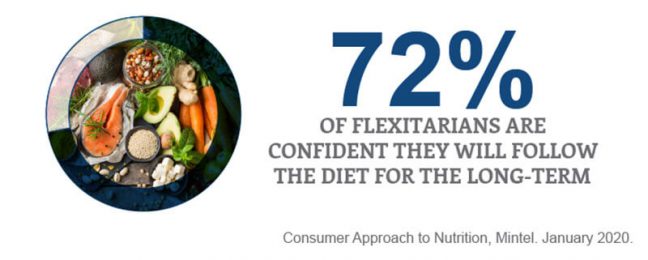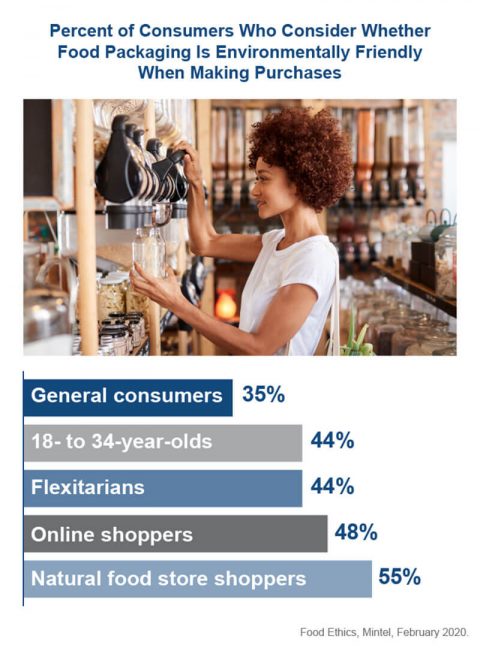by Michael Uetz / Managing principal, Midan Marketing, meat marketing specialists since 2004
As consumer attitudes toward meat are undergoing significant changes, new lines of meat alternatives are hitting the shelves every day. These changes are being driven by  shifts in the U.S. population toward younger generations with increasingly diverse ethnic profiles and attitudes. These shifts have also been accelerated by consumer concerns about the safety and availability of the meat supply chain in the wake of the COVID-19 pandemic. Because of these ongoing changes, plant-based meat alternatives are now top of mind for both meat consumers and the retail meat industry alike.
shifts in the U.S. population toward younger generations with increasingly diverse ethnic profiles and attitudes. These shifts have also been accelerated by consumer concerns about the safety and availability of the meat supply chain in the wake of the COVID-19 pandemic. Because of these ongoing changes, plant-based meat alternatives are now top of mind for both meat consumers and the retail meat industry alike.
Changing attitudes have also given rise to several new meat consumer segments including those known as Flexitarians. Flexitarians represent about one-fifth of meat eaters and are comprised of those who actively replace meat and poultry with vegetable- and plant-based proteins as a main dish daily or several times a week. Compared to the general meat eater, Flexitarians express more concerns about their health and the environment, see themselves as extremely environmentally conscious and are willing to pay more for environmentally safe products.1

These traits give meat brands, retailers and their meat product suppliers a unique opportunity to offer this new Flexitarian consumer innovative new products and SKU offerings that blend meat with plant or vegetable proteins to help grow incremental sales. To cultivate this growing market, meat brands are now marketing these blended products as “Flexitarian-friendly.” The potential for growth of brands positioned as Flexitarian-friendly is strong — 52% of consumers agree that Flexitarian diets are healthy and that number rises to 65% among 25- to 34-year-olds.3
Retailers are already merchandising blended protein products to attract Flexitarians. Since this is a new category, sales data is limited, but the information we have is promising. According to recent IRI data, there has been a 73% increase in the number of branded protein-blend products sold in the last year.4
How fast is the category growing? IRI currently tracks 19 products considered protein blends — eight of those products weren’t even on the market a year ago. Due to the small starting base and the high volume of SKUs introduced, beef blends have seen a 1,416% dollar sales growth — unit sales have grown even more at 2,318% since last year. This growth has caused a significant price drop from an average of $9.24 to $5.79 per unit (-37%), bringing the price in line with traditional ground beef.4

The retail growth of blends was preceded by a similar trend in the foodservice industry. The James Beard Foundation just completed the Fifth Annual Blended Burger Project — an initiative that encourages chefs to create healthier, more sustainable, tastier burgers that are at least 25% mushroom.5 Several retail brands have started producing mushroom-blended burgers as part of the Blended Burger Project, including Applegate Organics®, Grateful Burger and Raised & Rooted™ Blended Angus Beef Patties.4 Thomas Foods USA has also developed its own Flexitarian ground beef product that is approximately 70% meat and 30% vegetables, including carrots, broccoli and cabbage.
Brands are also changing their packaging to make these new blended products more attractive to Flexitarian shoppers at the meat case. “The demand for fresh meat alternatives has recently skyrocketed as consumers grow more health and socially conscious,” explained Monty Kayes, Director of New Business Development, Sealed Air. “As a result, we have also seen a spike in the demand for alternative packaging formats.” Some of these alternative packaging formats, like CRYOVAC® Brand plant-based rollstock, use less traditional plastic and give processors the protection they need while offering health and environmentally conscious Flexitarians the sustainability they demand.

For example, Johnsonville Garden & Grill is testing products in select markets labelled as a “Flexitarian Blend of Premium Pork & Real Culinary Ingredients” with the callout “A Flexitarian-Friendly Choice.” Flavor options for this sausage product include Southwestern Style (sausage with pepper jack, corn, sweet potatoes, red bell peppers, garlic and onion) and Cheddar & Broccoli (sausage with cheddar, onion, broccoli and cauliflower). Instead of the standard Johnsonville bright yellow expanded polystyrene tray, Johnsonville Garden & Grill sausages are packaged in a compostable tray — which aligns with the values of environmentally conscious Flexitarian customers. 
Based on these findings, meat products and plant-based meat alternatives don’t have to be an all-or-nothing choice for consumers or retailers. Blended products enable retailers and their supplier partners to show they understand the changing needs of today’s diverse customer base. Working together to create new and interesting alternatives also gives them the opportunity to offer greater variety with attributes that give consumers even more permission to buy.

1 Consumer Segmentation 2.0 Flexitarian Report, Midan Marketing. July 2019.
2 Consumer Approach to Nutrition, Mintel. January 2020.
3 Better for you Eating Trends, Mintel. November 2019.
4 IRI, MULO, 52 weeks ending 5/10/20.
5 The James Beard Foundation, https://www.jamesbeard.org/blendedburgerproject
6 Food Ethics, Mintel, February 2020.

